Q&A: Alia youssef
July 23, 2018
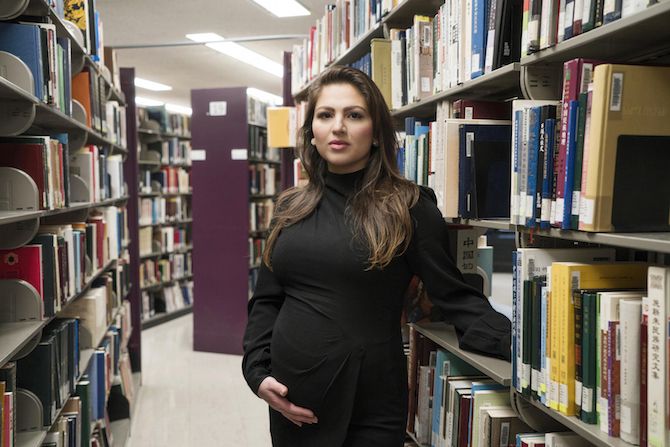
The Toronto-based photographer explores womanhood and gendered Islamophobia in her series The Sisters Project
Alia Youssef is the photographer behind The Sisters Project, a long-term portraiture series combating stereotypes and showcasing the multiplicity of Canadian-Muslim women. With an upcoming exhibition at the Ryerson Image Centre from September 12-October 14, we talked to Youssef about her artistic style and the impact of The Sisters Project.
How do your images dispel stereotypes of Muslim women?
The Sisters Project has many components: environmental portraits, text interviews, short videos, and an online community that fosters connection and inclusion. Essentially, it began as photographs that showcase Muslim women in spaces that are important to them. Whether that is public spaces that have symbolic meaning, or private spaces that the women work in, the photographs invite you to get to know the women in them. Photographs that invite you into a narrative determined by the subject, allows the viewer to think twice about who this person is, and to look further than any attribute that may lead to assumptions of their beliefs or ways of living due to their physical appearance. Another aspect of my work that dispels stereotypes is how the photographs and text interviews pair together. When I share the photographs, I also share a short text interview that allows the viewers to essentially “meet” the subject. I believe this is a really important aspect to the work as it creates a sense of intimacy and empathy, which is important to neutralize preconceived notions, and to go beyond that and dispel
them.
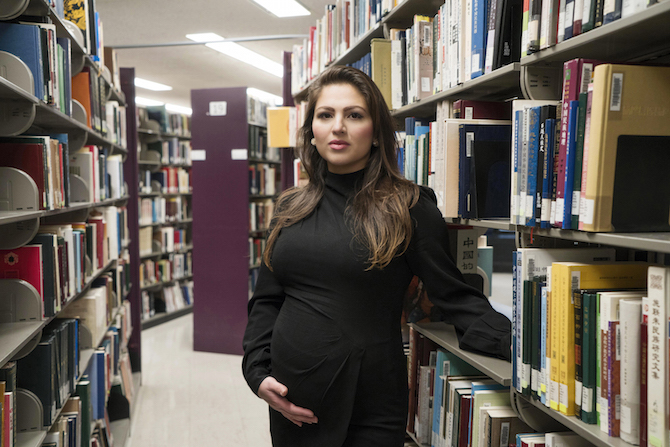
Sabreena. PhD Candidate and Researcher, and Board Member of the Canadian Council of Muslim Women. Ontario.
How do you navigate the creative arts space? Where do you feel your niche is? Would you consider yourself more of a photographer or storyteller?
I started navigating the creative arts space as solely a fine arts photographer, but, when The Sisters Project became better known, my opportunities related more to me being a storyteller, a media person, an educator, and an activist who uses photography as my medium. Doing my BFA in photography, I didn’t realize my love of portraiture could lead me to work as all those things or that my niche could lead me down so many avenues and other mediums. My niche is using photography and storytelling to highlight or discuss women’s stories or women’s issues (specifically gendered Islamophobia with this project.) I always consider myself a photographer first, but storytelling is embedded into almost everything I do.
How important is it to bring these underrepresented stories to the forefront?
If we don’t tell our own stories, will anyone tell them for us? And if they do, what would that look like? From my research, when Muslim women are represented by people who are not Muslim women, the characters usually fall flat in multi-dimensionality and accuracy. There are so many intersections of what a Muslim woman might be, and through my project I can see that with the 120+ people I have interviewed and photographed—so far everybody is so different in their beliefs, their outlooks, their behaviours and their appearances. By showcasing the stories of a marginalized community, we individualize a group of people and share the real life personalities behind any trope that we are used to seeing.
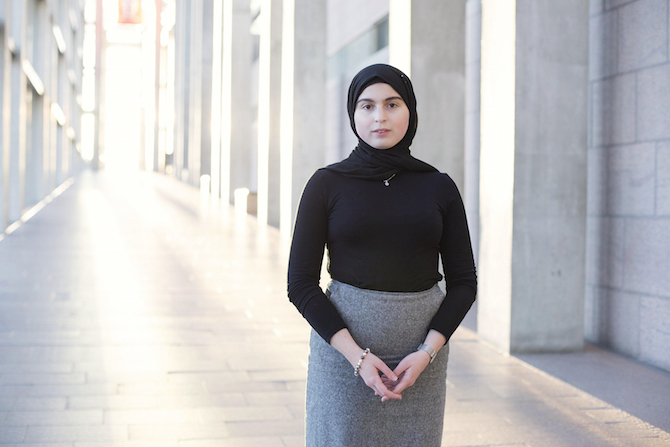
Barâa. Humanity and Art History Student. Ontario.
What feedback have you gotten from Muslim women and girls?
For the most part I hear how nice it is for them to “see” themselves in the project. That may be through identifying with certain stories that are shared or just identifying with the goal of the project as a whole. Another common feedback I hear is how much this project has become an online community where women feel support and collaboration within it.
How would you describe your artistic style?
I would say my artistic style is very editorial. My photographs often look like they are a part of a greater story, and almost always have text accompanying them as well. I am a portrait photographer, so the way I approach light, posing and post-production in my portraiture definitely contributes to my artistic style.
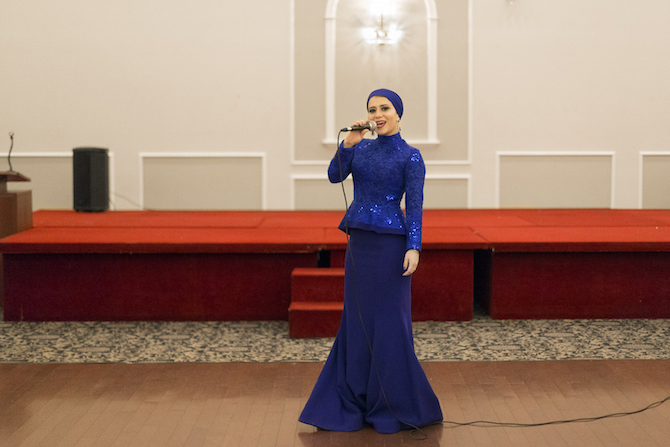
Dina, 22. Kinesiology and Health Science Student. Ontario.
What is your creative process? How do you make the women you shoot comfortable?
Prior to a photo shoot for The Sisters Project, I will chat with the subject ahead of time to get to know them better and answer any questions they have about the project. Most of the time the people who are being included in the project will have some idea of who I am or what the project is. Going into the photo shoot, I just act like myself, make a lot of jokes, give a lot of direction, and basically hang out with the subject. It’s important to me that both the subject and I are comfortable and are having a good time. That way the photos will be the best they can be. After the photo shoot is done I send a questionnaire to the subject so that when I quote them in the post, they are completely comfortable with what’s being shared.
What equipment do you use?
I use a Canon 6D with my favourite 50mm 1.4 lens, and recently I have incorporated a mirror-less camera in my kit for my growing use of video in the project.
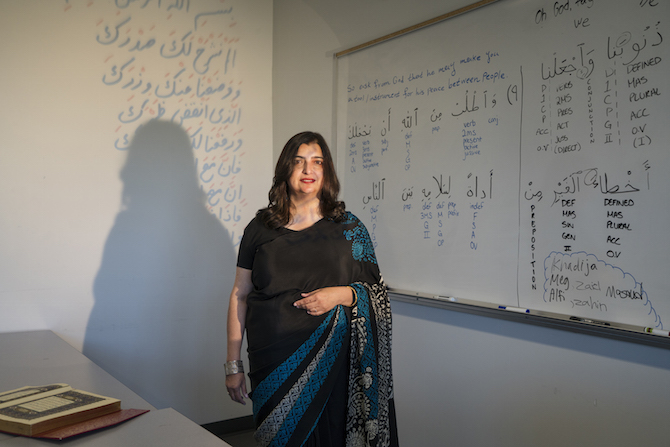
Seemi, 52. Classic Arabic Teacher at UBC. British Columbia.
How do you find the women you shoot?
I find the women I photograph most of the time through Facebook/social media “call outs,” word of mouth, networking at events, or recommendations from followers of the project. On the rare occasion people will message me after seeing press about the project to be involved.
Out of all the personal projects you have created, why is The Sisters Project something you continue to create?
Besides the fact it doesn’t “feel” close to being finished, The Sisters Project prevails because the subject is very meaningful to me, and I believe the message behind it is extremely important. I started it a year and a half ago as my thesis project for my BFA, but since then it has grown in reach, storytelling forms, the amount of people I profile, and to organizations I collaborate with. The issue of Muslim women’s representation is apparent and I believe my project has found a positive, artistic, way to combat it. I also just love the entire process of it. Many of my other projects are introspective and turn the lens on myself or my family, but I love photographing portraits of women and I am able to do that all the time with The Sisters Project. I am so grateful all the time that I found a project I care so deeply about, from the concept, to the way it’s created, to the connection and sisterhood that forms afterwards.
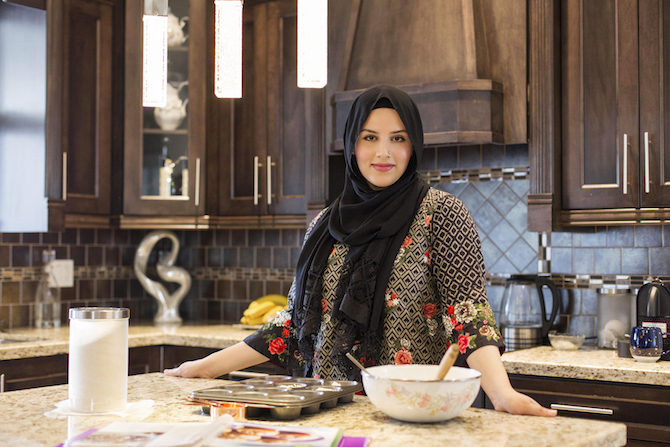
Sadra. Lifestyle Blogger, Marketing and Branding Strategist, and Baker. British Columbia.
What personal experiences led you to this project?
After immigrating to Canada when I was eight years old, I suddenly found myself in a place where my cultural and religious identities weren't mirrored by my peers. I didn't consciously realize this growing up, but looking back I realize it brought a sense of isolation and feeling "othered." When I began this project, it was an attempt to create sisterhood for myself, and for other women who, like me, didn't feel a connection to other Muslim women growing up. Also, having realized that I never had a Muslim woman role model, I wanted to create a platform with role models to show the incredible things Muslim women are doing across the country. Another experience that lead me to beginning this project was sitting in a classroom of mostly Muslim women in university (a Women in Islam course) and having the entire class echo the fact that there needs to be a more diverse, positive representation of Muslim women in the media. That was the moment I decided to do a portrait series that did just that.
The Sisters Project can be seen in an upcoming exhibition at the Ryerson Image Centre from September 12 to October 14. To learn more about the exhibition click here. To see more portraits from The Sisters Project click here.
-Sabrina Gamrot







